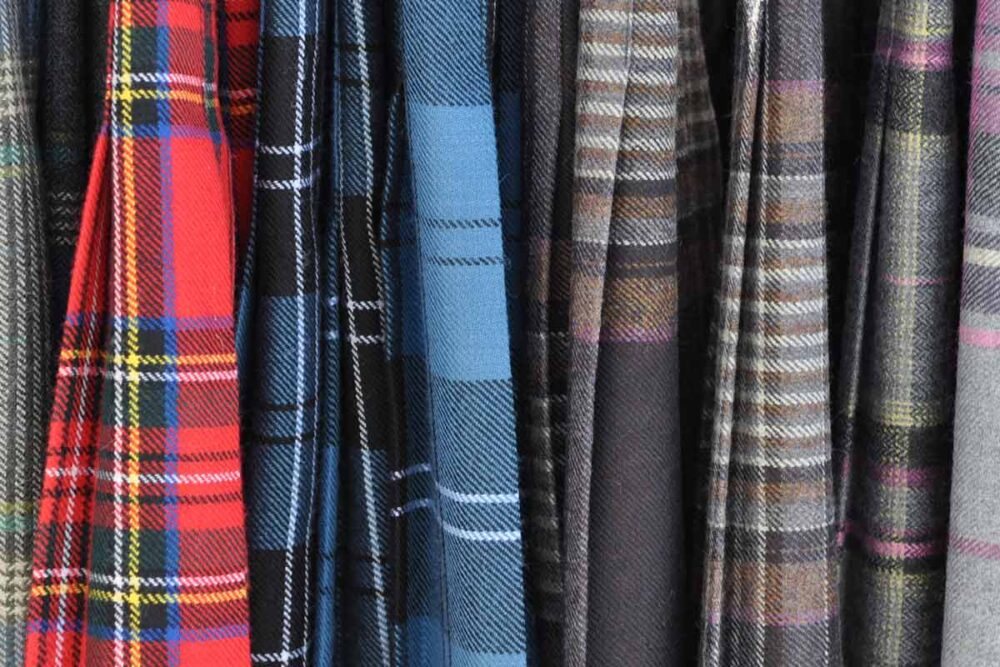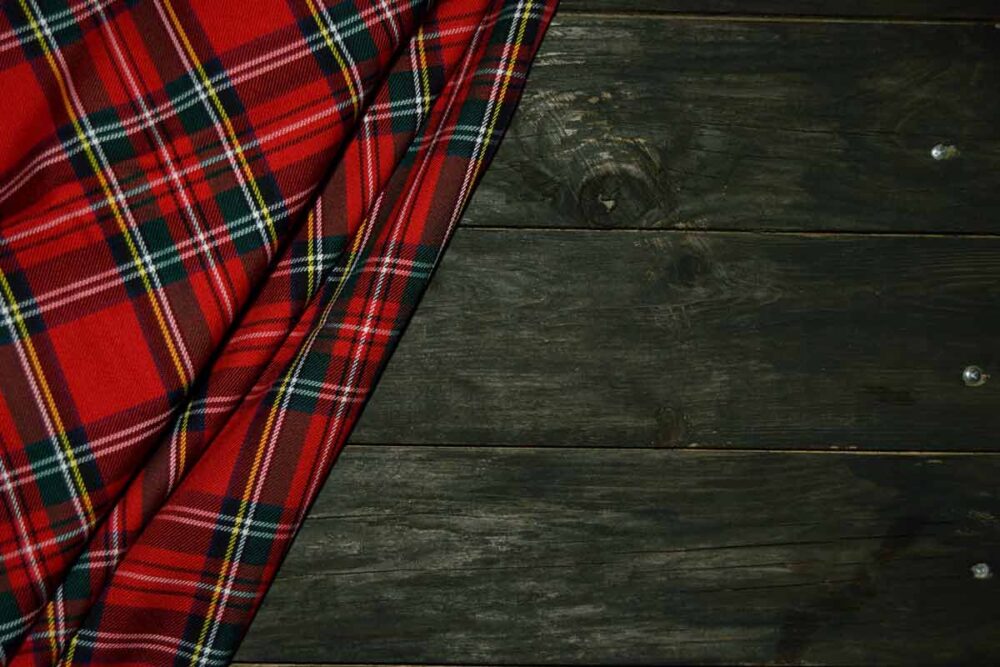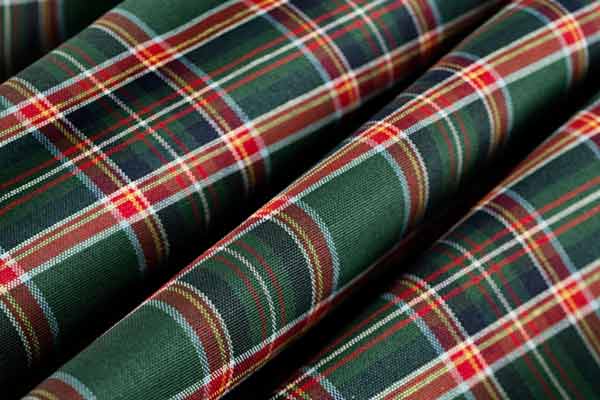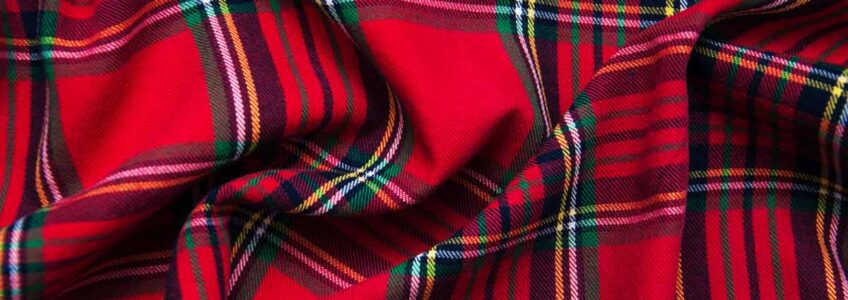Each fabric has a history, an origin, precise characteristics and different ways of being used. Today Manifattura Foderami Cimmino guides us to discover one of the most famous fabrics, tartan, a fabric that never goes out of fashion, capable of being renewed every new season!

Scottish tartan: features
Tartan was born in Scotland, specifically in the Highlandarea, although some scholars of the history of textiles have found fragments of a very similar material dating back to the eighth century B.C. in the Austrian mines of Hallstatt and the same geometric plots in some tombs of the mummies of Tarim, dating back to 2000 B.C. in China. It is presented as a weave of threads of different colors that are repeated within a defined pattern equal in the weft and warp: the result is a design composed of lines and squares with different chromatic effects.
The Scots have always used tartan as a symbol of cultural belonging: Scottish society was based on clans, extended families that exhibited plaid as a traditional dress. The woollen cloth was woven with colored threads to form the characteristic identifying design of one clan rather than another. Over time the plaid has turned into kilt, theScottish skirtpar excellence
The tartan is then compared to a kind of textile DNA used to recognize itself among clans: a material so much appreciated even by the English kings to become the preferred choice for tablecloths and for the tapestryof the castle of Balmoral, royal residence in Scotland.
Characteristic of the tartan fabric is the design of squares broken by rows of various colors: the diagonal weave is expressed through a decorative form called “picture”, created by repeating a sequence of stripes and colored lines in the sense of the warp and weft.
The variations are many, both in the case of the design and the raw material on which it is replicated: initially it was made exclusively with carded wool yarns, then also combed, and later also with silk, cotton and artificial fibers

Tartan what it is and where to use it
The use of plaid fabric in the fashion sector spread first in Europe and then in the rest of the world mainly thanks to the work of the English brand Burberry, founded in 1856, which signed timeless collections inspired by the English style. In 1920, in fact, the tartan was launched internationally as an inner lining for trenches, one of the most iconic garments of this brand. The “check” motif, characteristic of all Burberry products, has now become the hallmark of the brand.
To contribute to the iconicity of the checked fabric, the English designer Vivienne Westwoodalso thought of it, who has distorted the bon ton and chic appearance that had characterized it until the 70s: In his hands the tartan became the symbol of rebellion thanks to the testimonials of exception, the Sex Pistols, the punk group born in the store of the designer. Skirts, jackets, torn kilts worn by the band and fans: all declined in a tartan key and signed Westwood.
They will have to spend about 20 years to rediscover the Scottish fabric as a material worn by fans of the grunge phenomenon: how to forget the legendary Kurt Cobain singing his malaise dressed in torn jeans, simple t-shirts with prints and shirts strictly in tartan style.
In the fashion world, the check fabric has been constantly reworked and reinterpreted to give life to high fashion and ready-to-wear garments. Recently Maria Grazia Chiuri, artistic director of Dior, proposed the tartan declined in the Fall/Winter collection last year in the form of coats, plaid coats, trench coats and long vests or ponchos.
Particularly appreciated for the creation of men’s clothing, which extends from jackets to pants, passing through shirts, the tartan fabric can be used in the field of ties, handkerchiefs and scarf. Besides the world of clothing, the tartan fabric can be used in the furnishing field: we find it in elements of bed linen, kitchen linen and in the world of upholstery, curtains and decoration.
Tartan fabric
Thetartan fabric selected by Manifattura Foderami Cimmino is made of polycotone and presents the classic Scottish pattern to furnish the rooms of the house, for upholstery services and to give life to perfect curtains. It is chosen above all among the Christmas fabrics because the crossing of the three colors traditionally used to create this fabric, green, blue and red, make you immediately think of the shades of Christmas: the tartan pattern is used to furnish and decorate the house in a refined and welcoming way.

Whether for clothing, furniture, upholstery, lining, curtains or decorations, tartan fabric remains one of the most loved and versatile plots of all time. Browse now the catalogue offabrics Manifattura Foderami Cimmino and discover all the news: each product is designed to meet the functional and aesthetic needs of a specific sector.



